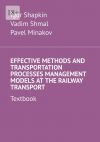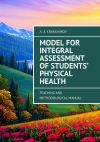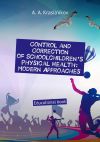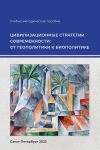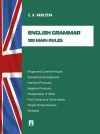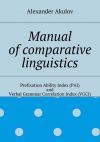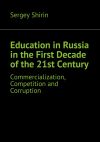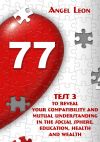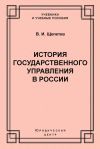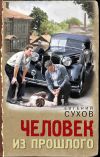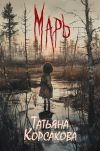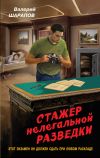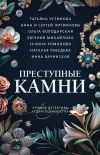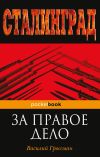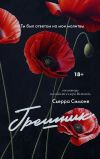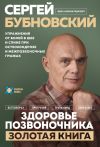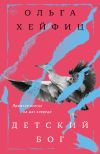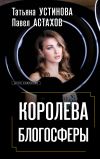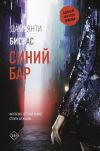Текст книги "Английский язык. Сравнительная педагогика"
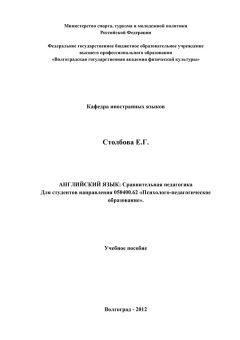
Автор книги: Елена Столбова
Жанр: Учебная литература, Детские книги
сообщить о неприемлемом содержимом
Текущая страница: 2 (всего у книги 5 страниц)
LESSON 4
TEACHING METHODS IN EDUCATION
TEXT A
1. Read and translate the text.
There are many teaching methods in education that enhance the learning process of the students. Read this article to know the different teaching methods.
To achieve the goal of teaching, the teacher must adopt effective teaching methods in education. The teacher has many options to choose from different teaching methods designed specifically for teaching and learning.
Writing lesson plans is a foremost thing that a teacher must do before executing any teaching strategy in the class. The teaching method should be adopted on the basis of certain criteria like the knowledge of the students, the environment and the set of learning goals decided in the academic curriculum.
Students respond differently to different methods of teaching. Also, the students have their unique way of demonstrating the knowledge acquired and absorbing the information that is imparted. So, to aid this process of demonstrating the knowledge, the teacher has to adopt a technique that assists the students in retaining the information and increasing their understanding. There are many teaching methods for children like questioning, modeling, demonstrating, collaborating and explaining.
We all know about the importance of higher education, so now let us learn some methods of teaching as well. Here are some of the basic teaching methods for higher education as well as for the middle education.
The teaching methods for special education are different from the teaching methods and theories for others. The education is imparted to these students based on their strengths and weaknesses. The teachers cater to the special needs of the students like modification in the regular teaching program, use of supplementary aids that allows students to participate in the learning process. Different effective teaching strategies are adopted on the basis of the disabilities. Four kinds of provisions are adopted in special education and they are inclusion, mainstream, segregation and exclusion.
Apart from these defined methods, nowadays many other teaching methods in education are being adopted to give quality education. The methods like role-play, story or games, seminars, presentations, workshops, conferences, brainstorming, case study, educational trips and modern audio-visual aids like documentary films, computers, internet, etc have been introduced in education. These new methods have increased the pace of learning and understanding. This also enhances the capability of the students to research and logically think for a given problem.
Vocabulary:
enhance-повышать
acquired-полученный
retaining-сохранение
questioning-опрос
collaborating-сотрудничество
curriculum-учебная программа
supplementary-дополнительный
mainstream-основная часть
exclusion-исключение
provision-обеспечение
executing-выполнение
impart-передавать
increase-повышать
modeling-моделирование
learning-учебный
cater to-отвечать (потребностям)
inclusion– введение
segregation-выделение
pace-темп
adopt-принимать
2. Give English equivalents:
Определенный критерий, передавать, объяснение, образовательный, учебная программа, сохранение, возможность, увеличение, важность, основной, сильная сторона, качество, различаться, исследовать, окружающая среда, помогать, использование.
3. Translate these expressions:
Learning goals, higher education, weaknesses, defined methods, cater to the needs, to participate, workshops, audio-visual aids, knowledge acquired, disabilities, case study, giving problem, supplementary aids, are adopted, brainstorming, role-play.
4. Answer the questions:
1. Why does a teacher use supplementary aids?
2. How many kinds of provisions are adopted in special education?
3. How do the teaching methods for special education differ from the teaching methods for others?
4. What enhances the capability of the students to logically think for a given problem?
5. Which methods can give quality education?
6. What does the teacher have to adopt to aid the process of demonstrating the knowledge?
7. What are the basic teaching methods for education?
5. Translate into English:
1. Эти новые методы увеличили темп обучения.
2. Метод обучения должен быть выбран на основе определенных критериев.
3. Учитель должен применять эффективные методы обучения.
4. Существует разнообразие методов: сотрудничество, объяснение, опрос и многие другие.
5. Применение методов обучения необходимо для повышения качества учебного процесса.
6. Студенты по-разному реагируют на различные методы преподавания.
7. Это повышает способности студентов к исследованию.
TEXT B
6. Read and translate the text.
Mikhail Vasilyevich Lomonosov (November 19 1711 – April 15 1765) was a Russian polymath, scientist and writer, who made important contributions to literature, education, and science. Among his discoveries was the atmosphere of Venus. His spheres of science were natural science, chemistry, physics, mineralogy, history, art, philology, optical devices and others. Lomonosov was also a poet, who created the basis of the modern Russian literary language.
Lomonosov was born in the village of Denisovka in the Arkhangelsk Governorate. In 1730, at nineteen, Lomonosov joined a caravan traveling to Moscow. Not long after arriving, Lomonosov obtained admission into the Slavic Greek Latin Academy. In 1736, Lomonosov was awarded a scholarship to Saint Petersburg State University. He plunged into his studies and was rewarded with a two-year grant to study abroad at the University of Marburg, in Germany.
Lomonosov returned to Russia in 1741. A year later he was named adjutant to the Russian Academy of Science in the physics department. In May 1743, Lomonosov was accused, arrested, and held under house arrest for eight months, after he supposedly insulted various people associated with the Academy. He was released and pardoned in January 1744 after apologising to all involved.
Lomonosov was made a full member of the Academy, and named professor of chemistry, in 1745. He established the Academy's first chemistry laboratory. Eager to improve Russia’s educational system, in 1755, Lomonosov joined his patron Count Ivan Shuvalov in founding the Moscow State University.
General understanding:
1. Who was Mikhail Lomonosov?
2. What were his main discoveries?
3. Where did Lomonosov obtain admission?
4. What role did he play in founding the Moscow State University?
5. What were his spheres of science?
LESSON 5
TYPES OF TEACHING METHODS
TEXT A
1. Read and translate the text.
Questioning. Testing and questioning are always known to be effective teaching methods due to its interactive nature. The questions are asked by the teacher with an intention to know what the student has learnt from earlier discussions and what it helps in deciding what should be taught further. This can be even vice-verse, students questioning the teachers to clarify the doubts that would enhance their understanding of the subject.
The inquisitive instinct of the students evokes them to ask questions and satiate their query. The teacher should encourage this in a positive way so that the student's critical thinking is developed. Testing differs in one aspect from questioning. Test in done in order to know about the previous knowledge and already taught things to the student.
Explaining. Explaining is one of the very important teaching methods in education. It has taken a form of lectures in teaching methods for higher education where the teacher presents the factual information in a direct and a logical way.
Sometimes the experiences can also be shared as a part of knowledge that would work as a source of inspiration for the students. While adopting this method the teacher should give an introduction and a proper summary. Make sure that the information is specific to the audience. The explanation should be accompanied with suitable examples for the better understanding of the students. It is like a discourse on a particular subject or topic that is for the entire class or public. Explaining can be clubbed with the modeling process to be more effective and to have a long-lasting effect on the pupils.
Modeling. Modeling is a type of visual aid for teaching as well as learning. It is a known fact that human brain absorbs more and understands better when visual aid facilitates explanation. This method works on three criteria – observing, retaining and replicating. The students learn more by observing the things and acquire it by imitating it time and again. This is also known as reinforced behavior. This type of learning has very important role to play in the learning process especially during the childhood, though it can happen in any stage of life. This helps the students to visualize the things and, then hypothesize the solution.
Demonstrating. With the help of demonstrative teaching methods in education students get an opportunity to explore the various aspects and understand the theory from a different perspective. Demonstration is a step-by-step explanation along with their reasons and significance for the better understanding of the student. It enhances the student's understanding by practically applying the knowledge and sharpens their skills. They become capable of identifying and organizing the subject matter in a more efficient way. Practical experimentation is a very good method used for demonstrating the subject.
Collaborating. Teamwork is a contemporary form of collaboration. The students are taught to work in a group that makes the instructing easier for the teacher. This method of teaching promotes a sense of mutual responsibility among the students. They learn to put in more effort to research for the topic and apply effective techniques to get the result. This inculcates patience and develops an ability to critically analyze a subject. It gives an opportunity to the students to solve the problem by a healthy discussion and co-operation. This is what we call 'group discussions' which motivates the students to perform in a team, show leadership skills and enhances the presentation capabilities as well. This is one of the best direct instructional methods.
Vocabulary:
clarify– прояснять
evoke– пробуждать
satiate– отвечать
summary– конспект
discourse– рассуждение
visual aids– наглядные пособия
retaining– сохранение
sharpen– оттачивать
promote– повышать
mutual– взаимный
inquisitive– любопытный
absorb– впитывать
query– вопрос
brain– мозг
club– собираться вместе
facilitate– облегчать
replicating– воспроизведение
inculcate– внушать
entire– полный
reinforced– подкрепленный
2. Give English equivalents:
Намерение, повышать, мышление, предыдущий, детство, терпение, опрос, воодушевлять, разделять, принимая, исследовать, отличаться, представлять, возможность, решать проблемы, случаться, решение, умение, ответственность, применять, взаимный.
3. Translate these expressions:
Taught, direct way, experiences, suitable examples, leadership skills, vice-verse, particular subject, modeling process, efficient way, testing, source of inspiration, visual aids, reinforced behaviour, are known, proper summary, long-lasting effect, step-by-step.
4. Answer the questions:
1. Where has explaining taken from?
2. When does human brain absorb more and understand better?
3. How does demonstrating enhance the student’s understanding?
4. What method of teaching promotes a sense of mutual responsibility among the students?
5. What is one of the best direct instructional methods?
6. What facilitates explanation?
7. How does testing differ from questioning?
5. Translate into English:
1. Этот метод основан на трех критериях – наблюдении, сохранении и воспроизведении.
2. Демонстрация – это пошаговое объяснение, которое повышает понимание учебного материала.
3. Командная работа – это современная форма сотрудничества.
4. Инстинкт любопытства побуждает студентов задавать вопросы.
5. Использование наглядных средств облегчает объяснение.
6. Студентов обучают работать в группе, что повышает чувство взаимоответственности среди учащихся.
7. Объяснение должно сопровождаться подходящими примерами.
TEXT B
6. Read and translate the text.
Jean-Jacques Rousseau (28 June 1712 – 2 July 1778) was a major Genevan philosopher, writer, and composer of 18th-century Romanticism. His political philosophy heavily influenced the French Revolution, as well as the American Revolution and the overall development of modern political, sociological and educational thought. His novel, “Émile”: or, “On Education” is a seminal treatise on the education of the whole person for citizenship.
Rousseau was born in Geneva, which was at the time a city-state and a Protestant associate of the Swiss Confederacy. Rousseau’s philosophy of education is not concerned with particular techniques of imparting information and concepts, but rather with developing the pupil’s character and moral sense, so that he may learn to practice self-mastery and remain virtuous even in the unnatural and imperfect society in which he will have to live.
The hypothetical boy, Émile, is to be raised in the countryside, which, Rousseau believes, is a more natural and healthy environment than the city, under the guardianship of a tutor who will guide him through various learning experiences arranged by the tutor. Today we would call this the disciplinary method of "natural consequences" since, like modern psychologists, Rousseau was one of the first to advocate developmentally appropriate education; and his description of the stages of child development mirrors his conception of the evolution of culture.
General understanding:
1. What was the name of his famous novel?
2. What did his philosophy of education include?
3. How was his disciplinary method called?
4. Why did he pay attention to the development of the pupil’s character and moral sense?
5. How did he describe the stages of development?
LESSON 6
HISTORY OF EDUCATION
TEXT A
1. Read and translate the text.
About 3000 BC mankind invented a system of writing. It included a method of writing numbers as well as language. The invention of writing was the major milestone in the history of education. It made possible the beginning of schools, as we know them today.
Before man developed writing, teachers had to repeat orally what was to be learned until the young had memorized it. A child could thus learn only what his teacher already knew, and had memorized. But by teaching the child to read, a teacher could make available the knowledge of many men, not only his own. Reading and writing could not be learned while the child served as an apprentice, imitated the behaviour of his elders, or took part in rituals, in addition, the first writing systems, which were a kind of picture writing, were awkward and hard to learn. As a result, special schools arose in which teachers taught reading, writing, and calculation.
The learned men of ancient times, by default became the teachers. Priests and prophets taught children of the wealthy and noble, the skills to take up their roles as leaders and businessmen. The priests’ position was elevated above many strata of society, and they were treated accordingly for their knowledge, and wisdom.
One of the most learned men of all time, Confucius (561B.C. – ), became the first private teacher in history. Born of a once noble family fallen on hard times, he found himself as an adolescent with a thirst for knowledge and nowhere to drink, since only the royal or noble were allowed an education. Because all the teachers were government officials, there was no way around the State policy. He solved it by going to work for a nobleman, whom he could accompany on his extensive travels. Such was his reputation, people sought him out to teach their sons. Confucius took any student eager to learn, and with the regular subjects, imparted his personal wisdoms for developing responsibility and moral character through discipline.
In ancient Greece, long acknowledged as the seat of philosophy and wisdom, the value of educating their children was recognized very early on, with some households engaging their own teacher.
Greek civilization flourished from about 700 BC to about 330 BC. During this period, the Greeks made the greatest educational advance of ancient times. In fact, Western education today is based on the ancient Greek model.
Ancient Greece was divided into independent city-states. The educational system of each city-state aimed to produce good citizens. Athens and Sparta, two of the most powerful city-states, had different ideals of citizenship. In Sparta, a citizen was judged largely by his political and military service. The government controlled education. Boys received physical and military training, but few learned to read and write. In Athens, unlike Sparta, a citizen was judged more by the quality of his mind. But Athenian citizens were also expected to develop their bodies and to serve the state.
Learned men, continued to impart wisdom on into the first years of Christianity, including the scribes in the Bible, who were often men that taught law as well. Through the first centuries A.D. Roman families often had educated slaves to teach their children, some of which were captives from other countries.
The Romans established institutions of higher learning. These institutions were schools of rhetoric, which prepared young men for careers in law and government.
Education in the modern world tended to be a “hit and miss” proposition until the Middle Ages, when the Roman Catholic Church took charge of teaching the sons of nobility, entrusting that charge to monasteries or specially designated learning “centres.” Many of these centres evolved into the distinguished learning institutions of today, including Cambridge University, whose first college was St. Peter’s, founded in 1284. The 17th and 18th centuries saw the greatest growth in education for more than the privileged, and also a dramatic rise in the training of teachers, and propounding of educational theories.
Vocabulary:
include – включать
memorize – запоминать
awkward – затруднительный
elevate – возвышать
accompany – сопровождать
acknowledged – общепризнанный
flourish – процветать
scribe – книжник
establish – основывать
charge – плата
major – крупный
apprentice – новичок
prophet – проповедник
adolescent – подросток
impart – передавать
engage – нанимать
advance – прогресс
captive – пленный
proposition – утверждение
evolve – развиваться
2. Give English equivalents:
Доступный, ответственность, век, привилегированный, возможный, знатный, ценность, раб, выдающийся, развиваться, умения, разрешать, правительство, признанный, включать, мудрость, право, пропагандировать, политика, оплата.
3. Translate these expressions:
Picture writing, strata of society, the State policy, major milestone, learned men, eager to learn, tended to be, ancient times, extensive travels, households, “hit and miss”, by default, government officials, higher learning, the Middle Ages.
4. Answer the questions:
1. Who established institutions of higher learning?
2. How did the learned men in ancient times become the teachers?
3. Where were young men prepared for careers in law and government?
4. Who were scribes?
5. When did mankind invent a system of writing?
6. Who was the first private teacher in history?
7. When was the greatest growth in education?
5. Translate into English:
1. В действительности, западное образование основывается на модели образования Древней Греции.
2. Должность священника возвышалась над всеми слоями общества.
3. Образование в современном мире имеет тенденцию быть теорией проб и ошибок.
4. Конфуций развивал в своих учениках ответственность и мудрость через дисциплину.
5. Священники и проповедники обучали детей только из знатных и богатых семей.
6. Греческая цивилизация совершила огромный прогресс в образовании.
7. Афины и Спарта имели различные идеалы в воспитании.
TEXT B
6. Read and translate the text.
Johann Heinrich Pestalozzi (12 January 1746 – 17 February 1827) was a Swiss pedagogue and educational reformer who exemplified Romanticism in his approach.
He was born on 12 January 1746 in Zürich, Switzerland. His father died when he was young, and he was brought up by his mother.
His first published book was “The Evening Hours of a Hermit” (1780), a series of aphorisms and reflections. This was followed by his masterpiece, “Leonard and Gertrude” (1781), an account of the gradual reformation, first of a household, and then of a whole village, by the efforts of a good and devoted woman. It was avidly read in Germany, and the name of Pestalozzi was rescued from obscurity.
Pestalozzi was a Romantic who felt that education must be radically personal, appealing to each learner's intuition. He emphasized that every aspect of the child's life contributed to the formation of personality, character, and reason. He learned by operating schools at Neuhof and Yverdon. The success of the Yverdon school attracted the interest of European and American educators. Pestalozzi's educational methods were child-centered and based on individual differences, sense perception, and the student's self-activity.
Pestalozzi was an important influence on the theory of physical education; he developed a regimen of physical exercise and outdoor activity linked to general, moral, and intellectual education that reflected his ideal of harmony and human autonomy.
General understanding:
1. Who was Heinrich Pestalozzi?
2. How did he define the system of education?
3. What were Pestalozzi’s educational methods?
4. How did he influence on the theory of physical education?
5. What were his famous books?
Правообладателям!
Это произведение, предположительно, находится в статусе 'public domain'. Если это не так и размещение материала нарушает чьи-либо права, то сообщите нам об этом.